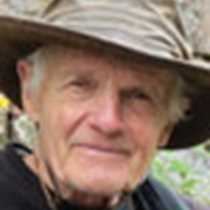Dawn found us shrouded in mist cruising north up the long and twisted Wrangell Narrows, no problem for our nimble craft, but impassable for the huge love boats. As we neared the fishing town of Petersberg the fog began to lift and we could see bald eagles, as common as sparrows, draped on the trees drying out their damp wings.
We split into two groups: one took to float plane or helicopter to have spectacular flights in clear weather over nearby glaciers spotting both bear and mountain goats. The others hiked to a gorgeous bog resplendent in spring flowers, Stellar jays and red-breasted sapsuckers.
Later in the afternoon we headed off in our Zodiac boats at the entrance of Le Conte Bay where turquoise and white icebergs as big as houses drifted in endless forms. Normally we would have cruised much closer to the Le Conte glacier but recently it has been calving at a far faster rate like most glaciers in the northern hemisphere and our way was blocked.
At the evening recap we placed barnacles under the microscope in the lounge and displayed them on the television monitors. These creatures, which cover the rocky coasts for tens of thousands of miles, we take for granted as we think we are going on to bigger and better things. But under the microscope we were astounded at their beauty as they opened their shells and flipped out their feet to gather plankton. David Cothran, our Expedition Leader describing their life history kept everyone on the edge of their seats.
Recap concluded with recordings of winter wrens, a species common across North America, singing their song at normal, half, quarter and one eighth speeds. Again we marveled at the hidden beauty we so casually pass by when we hear this tiny bird singing.
During the day we had splendid views of vast panoramas. By looking closely at the barnacle and wren we can come to understand how details are equally fascinating and inspiring.




